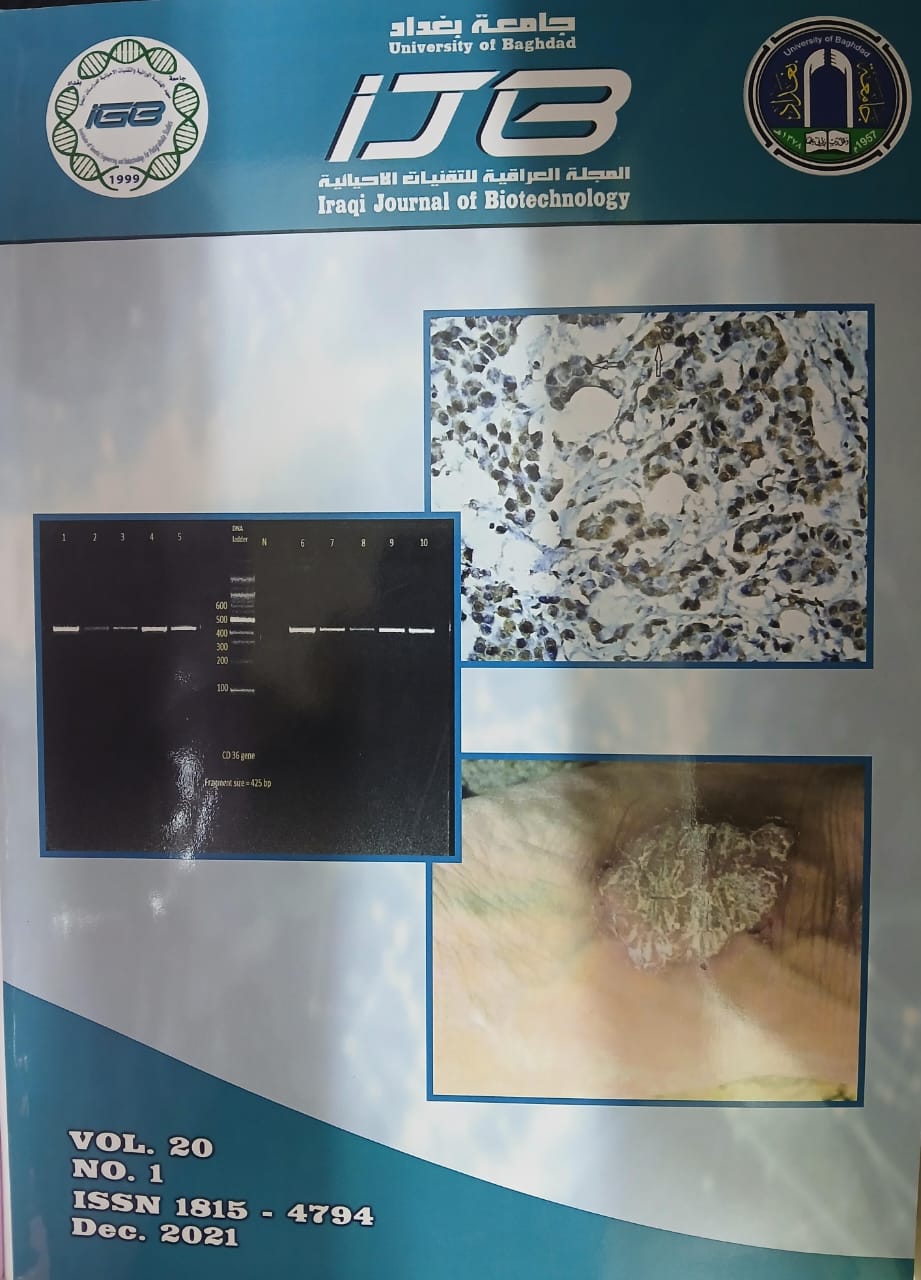Abstract
High blood pressure is defined as a systolic blood pressure of 140 mm Hg or more, or a
diastolic blood pressure of 90 mm Hg or more. Blood pressure is the force exerted by the circulation of
blood on the walls of the body's arteries, which are the main blood vessels in the body. High blood
pressure is classified into normal, first stage, second stage, or third stage. Risk factors include lifestyle
factors, environmental factors, and genetics. There are two types of high blood pressure, essential
hypertension and non-essential hypertension. Blood samples were collected, representing 50 samples
from patients with high blood pressure, in addition to 50 healthy samples. This study was conducted with
the aim of studying the relationship between genetic variation of some genes and environmental factors
associated with essential blood pressure in Iraqi patients. The studies were conducted in the laboratories
of the Institute of Genetic Engineering - University of Baghdad, as well as in the research laboratories of
the Ministry of Science and Technology. Total genomic DNA was extracted using a special kit from fresh
unfrozen blood samples, and then normal polymerase chain reaction and PCR-RFLP were used to detect
mutations in Cluster of differentiation 36 rs1761667 G>A gene using primers and specialized restriction
enzyme is HhaI. The results of the GG wild-type Cluster of differentiation 36 gene showed a band (161+
264 bp), while the heterozygous GA genotypes showed (161, 264, and 425 bp), respectively, and for the
mutant AA genotypes (425 bp). Nitrogenous base sequence analysis (Sequencing) was conducted for both
infected and healthy samples. The results of the study showed that the incidence of hypertension in the
age group (20-65) years was higher in males than in females, reaching (60% and 40%), respectively. The
study showed that stress, smoking and exposure to pollution all have a clear and dangerous effect on the
percentage of people with high blood pressure. The results also showed that mutations between patients
and apparently healthy people in the Cluster of differentiation 36 gene may cause an increase in blood
pressure for the wild-type GG is (56%) versus (44%) a significant level (p<0.05), while for the
heterozygous GA it is (20%) versus (24%) ) found not significant, either for the homozygous mutant AA
is (24%) versus (32%) with a level (p<0.05). These results indicate that genetic variation (G>A) may be a
risk factor (GG)) for high blood pressure.
diastolic blood pressure of 90 mm Hg or more. Blood pressure is the force exerted by the circulation of
blood on the walls of the body's arteries, which are the main blood vessels in the body. High blood
pressure is classified into normal, first stage, second stage, or third stage. Risk factors include lifestyle
factors, environmental factors, and genetics. There are two types of high blood pressure, essential
hypertension and non-essential hypertension. Blood samples were collected, representing 50 samples
from patients with high blood pressure, in addition to 50 healthy samples. This study was conducted with
the aim of studying the relationship between genetic variation of some genes and environmental factors
associated with essential blood pressure in Iraqi patients. The studies were conducted in the laboratories
of the Institute of Genetic Engineering - University of Baghdad, as well as in the research laboratories of
the Ministry of Science and Technology. Total genomic DNA was extracted using a special kit from fresh
unfrozen blood samples, and then normal polymerase chain reaction and PCR-RFLP were used to detect
mutations in Cluster of differentiation 36 rs1761667 G>A gene using primers and specialized restriction
enzyme is HhaI. The results of the GG wild-type Cluster of differentiation 36 gene showed a band (161+
264 bp), while the heterozygous GA genotypes showed (161, 264, and 425 bp), respectively, and for the
mutant AA genotypes (425 bp). Nitrogenous base sequence analysis (Sequencing) was conducted for both
infected and healthy samples. The results of the study showed that the incidence of hypertension in the
age group (20-65) years was higher in males than in females, reaching (60% and 40%), respectively. The
study showed that stress, smoking and exposure to pollution all have a clear and dangerous effect on the
percentage of people with high blood pressure. The results also showed that mutations between patients
and apparently healthy people in the Cluster of differentiation 36 gene may cause an increase in blood
pressure for the wild-type GG is (56%) versus (44%) a significant level (p<0.05), while for the
heterozygous GA it is (20%) versus (24%) ) found not significant, either for the homozygous mutant AA
is (24%) versus (32%) with a level (p<0.05). These results indicate that genetic variation (G>A) may be a
risk factor (GG)) for high blood pressure.
Keywords
CD36 gene
CD36 rs1761667 G>A SNP high blood pressure.
